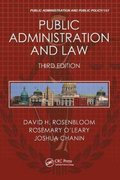Answered step by step
Verified Expert Solution
Question
1 Approved Answer
solve the following questions. You may need to use the appropriate appendix table or technology to answer this question. Suppose In 2018, RAND Corporation researchers
solve the following questions.




Step by Step Solution
There are 3 Steps involved in it
Step: 1

Get Instant Access to Expert-Tailored Solutions
See step-by-step solutions with expert insights and AI powered tools for academic success
Step: 2

Step: 3

Ace Your Homework with AI
Get the answers you need in no time with our AI-driven, step-by-step assistance
Get Started


